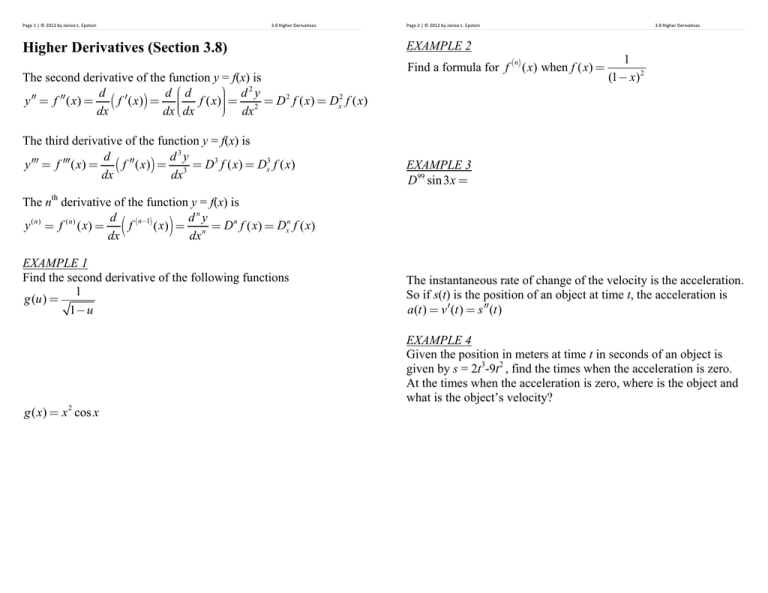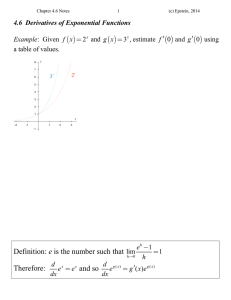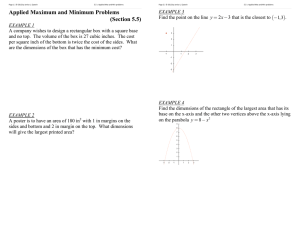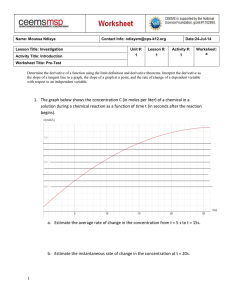( ) Higher Derivatives (Section 3.8)
advertisement

Page 1 | © 2012 by Janice L. Epstein 3.8 Higher Derivatives Page 2 | © 2012 by Janice L. Epstein Higher Derivatives (Section 3.8) EXAMPLE 2 Find a formula for f ( ) ( x) when f ( x) = n The second derivative of the function y = f(x) is ö÷ d 2 y d d æç d ¢¢ ¢¢ ¢ y = f ( x) = ( f ( x)) = ç f ( x)÷÷ = 2 = D 2 f ( x) = Dx2 f ( x) ø dx dx dx çè dx The third derivative of the function y = f(x) is d d3y y ¢¢¢ = f ¢¢¢( x) = ( f ¢¢( x)) = 3 = D3 f ( x) = Dx3 f ( x) dx dx 3.8 Higher Derivatives 1 (1- x) 2 EXAMPLE 3 D99 sin 3x = The nth derivative of the function y = f(x) is d (n-1) dny (n) (n) y = f ( x) = f ( x) = n = D n f ( x) = Dxn f ( x) dx dx ( ) EXAMPLE 1 Find the second derivative of the following functions 1 g (u ) = 1- u g ( x) = x 2 cos x The instantaneous rate of change of the velocity is the acceleration. So if s(t) is the position of an object at time t, the acceleration is a (t ) = v ¢(t ) = s ¢¢(t ) EXAMPLE 4 Given the position in meters at time t in seconds of an object is given by s = 2t3-9t2 , find the times when the acceleration is zero. At the times when the acceleration is zero, where is the object and what is the object’s velocity? Page 3 | © 2012 by Janice L. Epstein 3.8 Higher Derivatives Page 4 | © 2012 by Janice L. Epstein EXAMPLE 5 (a) Sketch the curve traced by the given vector equation (b) Find r′(t) and r′′ (t) (c) Sketch the position vector r(t), the tangent vector r′(t) and r′′(t) for the given value of t. r (t ) = 2cos t ,3sin t , t = p / 3 r (t ) = t 3i + t 2 j , t = 1 3.8 Higher Derivatives Page 5 | © 2012 by Janice L. Epstein 3.8 Higher Derivatives Page 6 | © 2012 by Janice L. Epstein 3.8 Higher Derivatives EXAMPLE 6 3 Find f ¢¢( x) if f ( x) = g ( x3 ) + ( g ( x)) EXAMPLE 8 Find f′ and f′′. Sketch f, f′ and f′′ and determine their domains. f ( x) = x 2 - x EXAMPLE 7 Find y ¢¢ by implicit differentation for x + y = 1.








